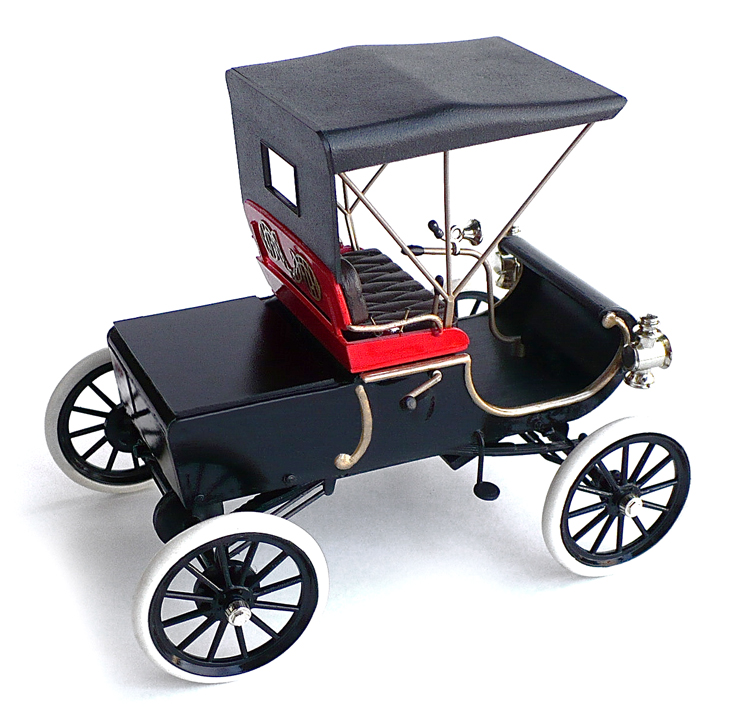The one big complaint I have about this kit is that the greebling and detail are too intense, and as a result the model tends to have a lumpy appearance. Looking at screen shot images that model tends to have a smoother look to it. I think that if I ever build this kit again I'll dumb down the detailing next time.
From Wikipedia"
Colonial One is a civilian starship that serves as the headquarters for the President of the Twelve Colonies. It is a small, FTL-capable ship that is dwarfed by the Battlestar Galactica; the ship can easily dock within one of Galactica's flight pods. Colonial One can also land on and take off from a planetary surface.
Prior to the Cylon attack on the Twelve Colonies, Colonial One is a Caprican civilian starliner known as Colonial Heavy 798. The ship had been chartered by the Colonial government to transport then-Secretary of Education Laura Roslin and her staff to the Battlestar Galactica's decommissioning ceremony.
Following the Cylon attack, along with the elimination of most of the government, Laura Roslin becomes the President of the Twelve Colonies. The ship takes on the call sign Colonial One, and is used to coordinate the collection and organisation of the civilian refugee fleet. After leading the 50,000 survivors to rendezvous with Galactica, which survives the attack, Colonial One becomes the residence and de facto "capitol" of the Fleet government. Although the call sign is based on the real-world United States protocol of referring to any Air Force, Marine Corps, Army, Navy, Coast Guard, or civilian aircraft as, respectively, "Air Force One", "Marine One", "Army One", "Navy One", "Coast Guard One" or "Executive One" when the President is aboard, Colonial One retains this moniker throughout the series, irrespective of the President's presence or absence and is never again referred to as Colonial Heavy 798, apart from during a flashback to before the holocaust; likewise, neither Galactica nor any other vessel adopts the name when the President is aboard.
After the discovery and colonization of New Caprica, Colonial One is landed on the planet's surface and serves as the residence and office of Gaius Baltar, who becomes president just prior to the colonisation. As such, it is captured in the Cylon occupation. During the liberation of New Caprica and the evacuation of its human population, Colonial One is recaptured from the Cylons and leaves the planet with Laura Roslin aboard. Gaius Baltar is left behind with the Cylon occupation forces. The ship becomes the seat of legislative authority as well; with Cloud 9, destroyed by the nuclear warhead which Baltar had given to Gina Inviere, the reconstituted Quorum of Twelve hold their meetings at a conference table aboard Colonial One. Most of the Quorum are assassinated aboard the ship by Tom Zarek during his coup d'état; only those absent from the meeting, such as Lee Adama, escape.
Colonial One is ultimately destroyed after finding a new Earth. On Admiral Adama's orders, Galactica and the rest of the fleet are directed into the Sun by Anders.
















































